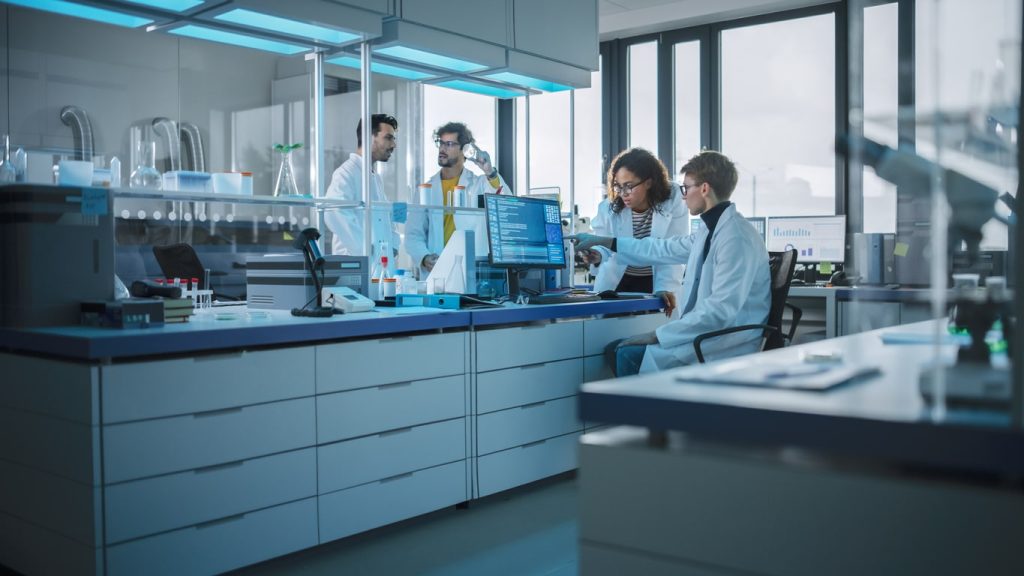
Scientific research thrives on the intricate dance between skilled researchers and sophisticated equipment. From unraveling the mysteries of life to developing innovative materials, each scientific discipline relies on a unique arsenal of lab equipment. This equipment plays a vital role in manipulating, analyzing, and storing samples with utmost precision. However, to ensure reliable results and continued operation, proper maintenance and service are crucial. Let’s delve into some of the most common lab equipment types and their specific repair and service needs.
Chromatography: Separation Powerhouses
· High-Performance Liquid Chromatography (HPLC): HPLC separates complex mixtures based on their interaction with a stationary phase.
o Maintenance: Regular replacement of filters and columns, cleaning of pumps and injectors, and system calibration are essential. Service needs can include pump seal replacements, leak detection and repair, and injector cleaning.
· Gas Chromatography (GC): GC separates volatile mixtures based on their boiling points.
o Maintenance: Routine maintenance involves replacing injection port liners, cleaning the detector, and maintaining a clean carrier gas system. Service needs can encompass injector repairs, detector cleaning, and column replacements.
Centrifuges: The Force Multipliers
Centrifuges separate mixtures based on the principle of sedimentation. They spin samples at high speeds, forcing heavier components to the bottom.
· Maintenance: Regular rotor balancing, cleaning of rotors and chambers, and proper lubrication are essential. Service needs might include worn-out belt replacements, motor repairs, and rotor bearing replacements.
Mass Spectrometers (MS): Unveiling the Molecular World
MS instruments analyze the mass-to-charge ratio of molecules, providing detailed information about their structure and composition.
· Maintenance: Routine maintenance involves cleaning the ion source, vacuum system, and detector. Service needs can be complex and often require manufacturer-trained personnel, potentially including repairs to the ion source, vacuum system leaks, and detector malfunctions.
Incubators: Fostering Life
Incubators provide a controlled environment for cell cultures and microorganisms, maintaining specific temperature and humidity levels.
· Maintenance: Regular cleaning and disinfection of the chamber, calibration of temperature and humidity sensors, and filter replacements are crucial. Service needs might include repairs to heating and cooling elements, sensor replacements, and door seal repairs.
Ultra-Low Freezers (ULFs): Preserving the Future
ULFs store biological samples at extremely low temperatures, typically below -80°C, for long-term viability.
· Maintenance: Routine checks on temperature stability and door seals are essential. Service needs might involve repairs to compressors, vacuum leaks, and temperature control systems. These freezers require specialized technicians due to the complex cryogenic systems involved.
Environmental Chambers: Simulating the World
Environmental chambers replicate specific environmental conditions such as temperature, humidity, and light for stress testing samples or mimicking natural habitats.
· Maintenance: Regular cleaning of the chamber and sensors, calibration of temperature and humidity controls, and filter replacements are necessary. Service needs may include repairs to heating and cooling elements, sensor replacements, and door seal repairs.
The Importance of Preventative Maintenance
While these are just a few examples, the importance of proper maintenance extends to all lab equipment. Preventative maintenance helps to:
· Extend Equipment Lifespan: Regular maintenance catches minor issues before they escalate into major breakdowns, preventing costly repairs and replacements.
· Ensure Data Integrity: Properly functioning equipment minimizes the risk of inaccurate results due to malfunctioning instruments.
· Maintain Safety: Regular maintenance helps identify potential safety hazards, such as gas leaks or faulty electrical components.
· Optimize Performance: By keeping equipment properly calibrated and serviced, researchers can ensure optimal performance and reliable data generation.
Developing a Maintenance Plan
Creating a comprehensive maintenance plan is crucial for any laboratory. This plan should include:
· Equipment Inventory: Maintain a detailed list of all equipment, including model numbers and serial numbers.
· Maintenance Schedule: Develop a schedule for routine maintenance tasks for each piece of equipment, following manufacturer recommendations.
· Calibration Schedule: Regularly calibrate equipment as per manufacturer specifications to ensure accuracy.
· Service Contracts: Consider service contracts with qualified technicians for complex equipment to ensure timely expert intervention when needed.
· Training: Train lab personnel on proper equipment operation and basic maintenance procedures to identify potential issues early on.
Lab equipment is a vital investment for scientific research. By implementing a proactive approach to maintenance and service via the help of service providers such as Peak BioServices, researchers can ensure the smooth operation, reliability, and longevity of their instruments. This, in turn, helps to ensure the integrity of research data and ultimately drives scientific progress forward.